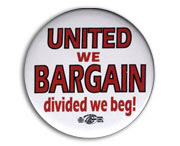THE WORKING CLASS IN AMERICAN HISTORY series has been a vanguard of the "new" labor history since its premiere in 1978. Building on a deep foundation of workplace, community, culture, and political studies, the series has maintained a commitment to place the experience and agency of working people at the center of U.S. history.
Coming soon:
Radical Unionism in the Midwest, 1900-1950
Rosemary Feurer
The dynamic relationship between union strategy and the ideals of radicalism
After several failed attempts to organize workers in the early years of the Depression, District Eight of the United Electrical, Radio, and Machine Workers (UE) elected the openly communist William Sentner as president. Rosemary Feurer's Radical Unionism in the Midwest examines the story of the famously fierce battles between the Sentner-led UE workers and bitterly anti-union companies during the 1930s and'40s.
Feurer studies District Eight through the union backlash in the wake of the 1937-38 recessions, the growth of the district during World War II, and the postwar anticommunist drive that targeted Sentner. Based on this history, Feurer contests the conventional idea that the political perspectives of radicals held little significance for trade union behavior and strategies. From one of the longest sit-down strikes in U.S. history to their community campaigns to democratize union decision making, Feurer argues that radical leaders and a significant segment of UE workers developed a style of unionism that sought to connect union and community concerns in order to undermine business power in the community and on the shop floor.
A volume in the series The Working Class in American History, edited by James Barrett, Alice Kessler-Harris, Nelson Lichtenstein, David Montgomery
Rosemary Feurer is an associate professor of history at Northern Illinois University. She is author of Remember Virden, 1898.
Subscribe to:
Post Comments (Atom)




No comments:
Post a Comment